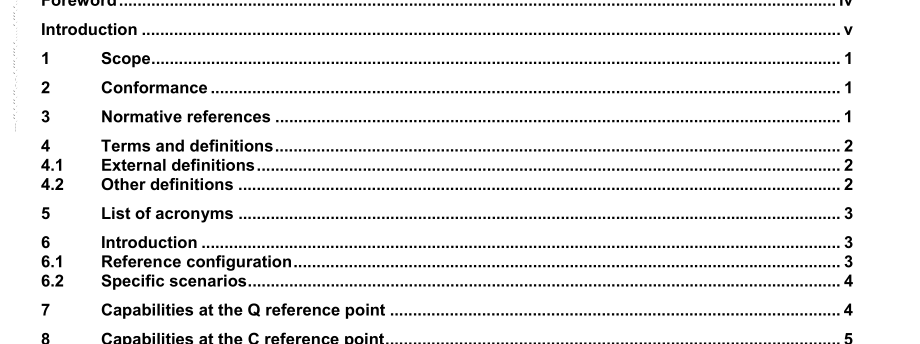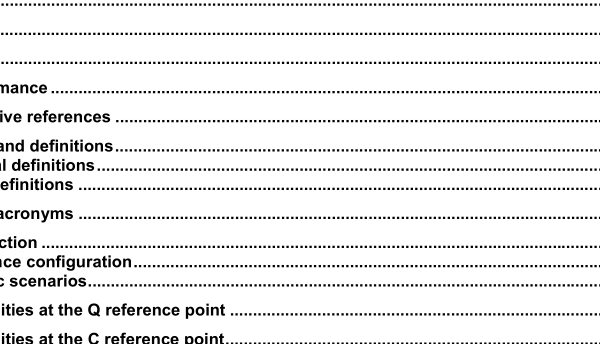ISO IEC 21992:2003 pdf download – Information technology — Telecommunications and information exchange between systems — Private Integrated Services Network — Mapping functions for the tunnelling of QSIG through IP networks.
1 Scope This International Standard specifies functions for using a packet network that uses the Internet Protocol (IP) as its network layer protocol and UDP and TCP as its transport layer protocols, to interconnect two Private Integrated services Network eXchanges (PINXs) forming part of a Private Integrated Services Network (PISN). Interconnection is achieved by carrying the inter-PINX signalling protocol directly over the Transmission Control Protocol (TCP) and inter-PINX user information (e.g., voice) over the Real-time Transport Protocol (RTP), RTP being carried over the User Datagram Protocol (UDP). 2 Conformance In order to conform to this International Standard, a PINX shall satisfy the requirements identified in the Implementation Conformance Statement (ICS) proforma in Annex A. 3 Normative references The following referenced documents are indispensable for the application of this document. For dated references, only the edition cited applies. For undated references, the latest edition of the referenced document (including any amendments) applies. ISO/IEC 11572:2000, Information technology — Telecommunications and information exchange between systems — Private Integrated Services Network — Circuit mode bearer services — Inter-exchange signalling procedures and protocol ISO/IEC 11574:2000, Information technology — Telecommunications and information exchange between systems — Private Integrated Services Network — Circuit-mode 64 kbit/s bearer services — Service description, functional capabilities and information flows ISO/IEC 11579-1:1994, Information technology — Telecommunications and information exchange between systems — Private integrated services network — Part 1: Reference configuration for PISN Exchanges (PINX) ISO/IEC 11582:2002, Information technology — Telecommunications and information exchange between systems — Private Integrated Services Network — Generic functional protocol for the support of supplementary services — Inter-exchange signalling procedures and protocol
8.2 UDP streams The U Q -channel shall be mapped to a received UDP stream and a transmitted UDP stream, each carrying RTP packets. The received UDP stream shall be received at a local IP address and port as indicated in transmitted RCI and the transmitted UDP stream shall be transmitted to a remote IP address and port as indicated in received RCI. NOTE If required, PINXs can use RTCP as defined in IETF RFC 1889 to monitor the quality of RTP carried over UDP streams. 9 Mapping functions 9.1 Mapping the D Q -channel For transmission, a complete QSIG message and RCI shall be embedded in a QPKT packet within a TPKT packet as defined in 8.1. The segmentation and reassembly procedures of ISO/IEC 11572 shall not be used. The RCI implicitly refers to the call to which the QSIG message relates. It shall be included in the first forward and first backward message of each call, and shall not be included in subsequent messages. In addition, RCI shall not be included with call-independent messages. 9.2 Mapping a U Q -channel Each U Q -channel shall be mapped to a pair of unidirectional UDP streams with suitable transport capabilities defined by the RCI. The mapping function is responsible for proper packetization, de-packetization, transcoding etc. of media data.
ISO IEC 21992:2003 pdf download – Information technology — Telecommunications and information exchange between systems — Private Integrated Services Network — Mapping functions for the tunnelling of QSIG through IP networks






